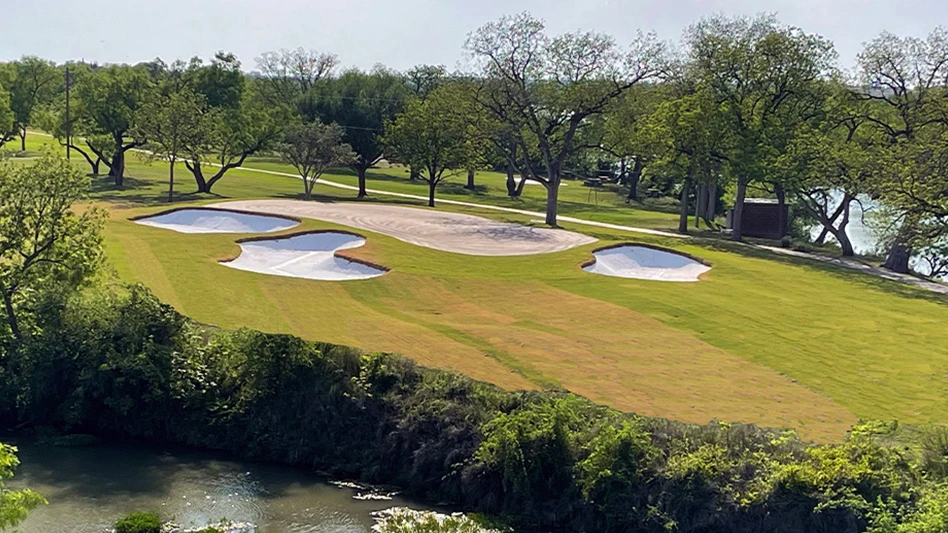
Summer arrived early and with a bang. Given the number of complaints from golfers about course conditions in recent weeks, it is obvious that everyone had become complacent following the mild summers of 2008 and 2009, when little turf stress was observed.
The combined number of 90-degree days over the last two years was much less than the annual average in just one season. Cooler temperatures, overcast skies, and frequent rainfall in 2008 and 2009 provided environmental conditions similar to that of the Pacific Northwest, where Poa annua thrives. With plenty of moisture and the absence of intense heat, Poa annua populations increased on many courses. Unfortunately, Poa annua declines much faster than bentgrass during weather extremes, which is why it fell prey to winterkill damage this winter and why it appears to be fading during this summer’s heat.
Dr. Derek Settle (Chicago District Golf Assoc.) and I, along with a number of turfgrass managers, have shared concerns that the turfgrasses were not well prepared for a return to typical summer conditions. Perhaps unaware of winterkill on putting greens in the region, golfers heading out to play in the spring were not anticipating damage that was still evident on some of the greens. Poorly-drained, native soil greens with a mixed stand of Poa annua and creeping bentgrass undoubtedly suffered the worst winter injury, with some greens being reseeded or even resodded in their entirety.
Truth is, there were some excellent playing conditions this spring, but Mother Nature unceremoniously intervened at the worst possible times. Memorial Day was especially concerning to golfers returning to the North. There were instances in which scald injury, wet wilt and dry wilt occurred just hours apart. Damage to greens was not as apparent on sand-based or sand-modified root zones that had better internal drainage.
This year’s widespread turf discoloration and thinning across golf courses are telltale signs of adverse environmental conditions. Complaints about green speed and puffiness were the banter of most Chicago District golfers over Memorial Day weekend, and fairways were especially hard hit in early July when temperatures soared, humidity dropped, and winds gusted.
In response to stressful summer conditions, turfgrass managers must err on the side of caution. Expectations should be tempered, and grooming, mowing and rolling are risky at such times. Rather, to help keep turfgrasses alive, the height of cut is generally raised. Topdressing and verticutting are reduced or halted altogether until environmental conditions improve, and light applications of water, i.e. syringing, cools the turf from midday heat.
While not an excuse, Mother Nature is the principal element by which turfgrass systems and golf courses are managed and conditioned. Be patient, and know that your superintendent and grounds staff are logging long hours to do everything possible to preserve your course.
Latest from Golf Course Industry
- PBI-Gordon promotes Jeff Marvin
- USGA investing $1 million into Western Pennsylvania public golf
- KemperSports taps new strategy EVP
- Audubon International marks Earth Day in growth mode
- Editor’s notebook: Do your part
- Greens with Envy 66: A Southern spring road trip
- GCSAA’s Rounds 4 Research auction begins
- Quali-Pro hires new technical services manager





